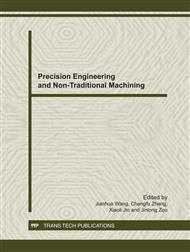p.483
p.488
p.497
p.503
p.508
p.514
p.518
p.523
p.527
Application of Response Surface Methodology to Optimize Quenching Process Parameters of 17Cr2Ni2Mo Steel
Abstract:
With fast development of output, light-weighting and high performance of automobile, 17Cr2Ni2Mo steel, as an important vehicle-used gear steel, has to improve properties to fulfill the development. The performance of 17Cr2Ni2Mo steel is affected by quenching process parameters. In order to investigate the effect of austenitizing temperature and holding time on the quenching hardness and tensile strength, the central composite design (CCD) and response surface method (RSM) are applied to optimize the operating variables viz. austenitizing temperature and holding time. Multi-objective optimization developed for the two responses (quenching hardness and tensile strength) indicates the optimum conditions to be 920.46°C of austenitizing temperature and 0 h of holding time, while the values of quenching hardness, tensile strength are not less than 43.47 HRC and 1616.42 MPa. The gear has advantages with mechanical strength and abrasion resistance energy when 17Cr2Ni2Mo steel is produced using the optimum parameters.
Info:
Periodical:
Pages:
508-513
Citation:
Online since:
November 2011
Authors:
Price:
Сopyright:
© 2012 Trans Tech Publications Ltd. All Rights Reserved
Share:
Citation:


